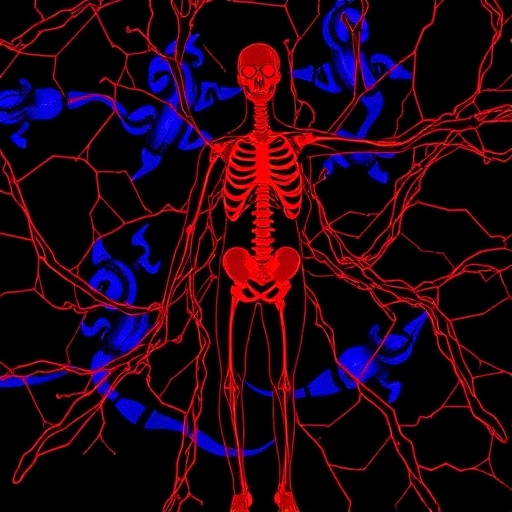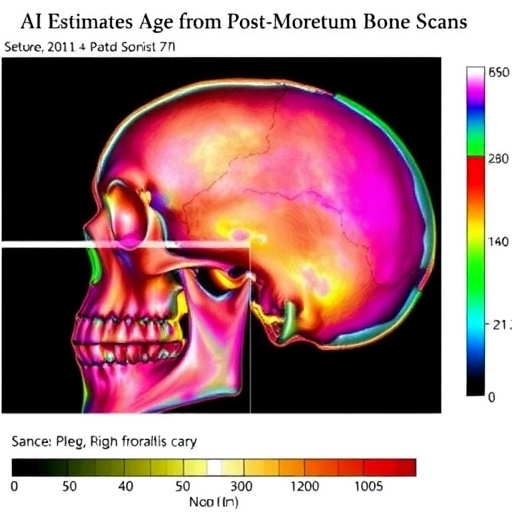
In an intriguing study bridging molecular biology and reproductive health, researchers have highlighted the significant role of ATF2 in the transcriptional regulation of USP4, a process that has profound implications for trophoblast function and stability of the KMT2A protein. This research sheds light on the complex dynamics in trophoblasts, which are critical cells for pregnancy, and their interaction with regulatory proteins. The findings indicate that disruptions in this pathway could lead to serious reproductive issues, presenting fertile ground for further investigation in the field of reproductive sciences.
ATF2, or Activating Transcription Factor 2, is noted for its multifaceted functions in cellular signaling and gene expression regulation. Its critical involvement in cellular responses to stress along with its roles in development and differentiation make it a key player in various biological contexts. The study conducted by Liu and colleagues elucidates how ATF2 activates the transcription of USP4, a ubiquitin-specific protease that has been implicated in protein stability and degradation pathways. This transcriptional activation process is poised to alter the stability and function of proteins crucial for maintaining trophoblast integrity.
The KMT2A protein, also known as MLL1, functions as a histone methyltransferase and is essential for the regulation of gene expression during cell differentiation. Its stability is vital for maintaining proper trophoblast function, as any degradation or instability could disrupt the delicate balance required for normal pregnancy development. The research underscores the direct link between ATF2-mediated transcriptional activation of USP4 and the stabilization of KMT2A, establishing a potential mechanistic framework that connects gene regulation to reproductive health.
Trophoblasts are a class of cells that form the outer layer of the blastocyst, playing a pivotal role in nutrient exchange between mother and fetus as well as in the formation of the placenta. They exhibit unique characteristics enabling them to invade the uterine lining, a process essential for implantation. The study suggests that dysregulation of the ATF2-USP4-KMT2A axis may lead to trophoblast dysfunction, with possible repercussions for placental health and overall pregnancy success.
One of the key findings of Liu et al. is the demonstration of a direct regulatory mechanism where ATF2, upon activation, enhances the transcription of USP4. This increase in USP4 levels is correlated with heightened stability of KMT2A, thereby allowing for normal trophoblast development. The pathway elucidated offers a novel angle to explore how environmental and physiological stressors could affect reproductive outcomes by influencing the activity of ATF2.
The implications of this study extend to potential therapeutic interventions. Understanding how ATF2 regulates USP4 opens doors to developing strategies aimed at bolstering trophoblast function in cases of infertility or pregnancy complications. In scenarios where trophoblasts fail to establish adequately, targeted modulation of these pathways could provide a means to enhance reproductive success, thereby addressing a pressing concern in reproductive health.
Moreover, the researchers posed important questions regarding the role of various stressors, including oxidative stress and inflammation, in modulating the ATF2 pathway. Given that trophoblast cells are often exposed to hostile uterine environments, elucidating how these external factors influence the ATF2-USP4-KMT2A pathway could unveil important mechanisms of trophoblast adaptation and resilience. This exploration is particularly relevant in the context of pregnancy complications that arise from maternal health issues.
As the field moves forward, the findings from Liu and colleagues are likely to inspire further research into similar mechanisms within trophoblast cells and other placental components. Investigating the interplay between various signaling pathways will provide deeper insight into the molecular underpinnings of placentation, potentially revealing new biomarkers for assessing placental dysfunction.
In conclusion, the study presents a compelling narrative about the intersection of transcriptional regulation and reproductive biology. By uncovering the role of ATF2 in stabilizing essential proteins within trophoblasts, researchers have contributed to a broader understanding of human reproductive health. The road ahead promises exciting possibilities, especially as we continue to decipher the complex regulatory networks that govern early pregnancy development and placental function.
Strong implications for future research directions are acknowledged, especially regarding potential interventions aimed at enhancing trophoblast functionality through modulation of the identified pathways. As scientists continue to map the intricate relationships between gene expression, protein stability, and cellular integrity, the findings from this study may serve as a pivotal reference point for future explorations in reproductive science.
The potential for translation of basic research findings into clinical applications heralds a new era in managing reproductive health, with the possibility of developing novel therapeutic modalities that target specific molecular pathways. Emerging studies will undoubtedly build upon this foundation, seeking to unravel the myriad factors influencing trophoblast behavior and pregnancy viability in diverse populations and clinical contexts.
Thus, the contribution of Liu, Pan, Yang, and others significantly marks an advancement in our understanding of trophoblast biology. The intersection of transcriptional regulation and proteomics reveals a compelling avenue for exploring complex reproductive challenges that lie at the forefront of modern reproductive science today.
As this research unfolds, continuous dialogues among researchers, clinicians, and reproductive health specialists will be essential in translating these fundamental discoveries into actionable clinical strategies. This collaborative effort may enhance our capacities in addressing infertility and pregnancy complications, ultimately improving outcomes for many individuals and families striving for healthy pregnancies.
The synergy of molecular biology and reproductive health embodies the potential for impactful discoveries that can transform societal challenges into tangible solutions. With ongoing research efforts and a commitment to understanding the underlying mechanisms of trophoblast function, the future of reproductive science looks promising.
The newfound understanding of the ATF2-USP4-KMT2A relationship underscores the necessity of continued investigation into the cellular roles and mechanisms influencing reproductive success. Enhanced research strategies will ensure that we remain at the cutting edge of reproductive science—strengthening the bond between scientific inquiry and the well-being of future generations.
Subject of Research: The role of ATF2 in activating USP4 and stabilizing KMT2A in trophoblast dysfunction.
Article Title: ATF2-mediated Transcriptional Activation of USP4 Stabilizes KMT2A Protein and Promotes Trophoblast Dysfunction.
Article References:
Liu, J., Pan, K., Yang, C. et al. ATF2-mediated Transcriptional Activation of USP4 Stabilizes KMT2A Protein and Promotes Trophoblast Dysfunction. Reprod. Sci. (2025). https://doi.org/10.1007/s43032-025-01938-z
Image Credits: AI Generated
DOI:
Keywords: ATF2, USP4, KMT2A, trophoblasts, reproductive health, transcriptional regulation, protein stability, pregnancy.
Tags: Activating Transcription Factor 2 functionsATF2 role in trophoblast functioncellular stress responses in pregnancygene expression regulation in trophoblastsimplications of trophoblast disruptionKMT2A protein stabilitymolecular biology of reproductive healthprotein degradation pathways in reproductionreproductive health researchtrophoblast signaling pathwaysubiquitin-specific protease functionsUSP4 transcriptional regulation




